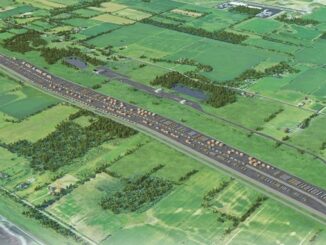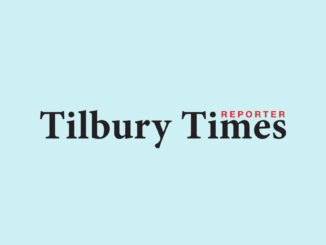
By: By Colin Graf, Local Journalism Initiative Reporter, Windspeaker.com
The search for children’s remains began this week on the grounds of Canada’s longest-running and largest residential school. Ground-penetrating radar is being used at the school known as the Mohawk Institute located at Six Nations of the Grand River First Nation in southern Ontario.
Police and community members working in pairs are using the GPR machines in the area closest to the old school buildings this fall, with further work on the 500-acre site scheduled for next spring, said Rebecca Jamieson, president of Six Nations Polytechnic, at a recent news conference.
Leading up to the search, school survivors helped community members and a recently established Survivors’ Secretariat to map the area and review archival records, she said.
“For many this day has been long-awaited, but also brings with it a stark reminder of atrocities that were committed against our people in these institutions,” said Chief Mark B. Hill. “The coming months will definitely be difficult for Six Nations.” He said chief and councillors are focused on preparing the community for the results of the search and providing “mental health supports and crisis support to those who may need it,” he added.
The central role of survivors in the work was described by Kimberly Murray, executive lead of the secretariat, an organization established this year to coordinate protocols and processes associated with investigations and to gather information to document and share the truth about what happened at the Mohawk Institute.
Survivors are the ones who know about “the children who were here one day and gone the next,” Murray said. “Survivors are the ones who heard the whispered truths about where the children and the babies are buried,” she reminded those in attendance at the press event.
The data from the search will be backed up and analyzed following best practices laid out by archaeologists, Murray detailed. During the winter months, more community members will be trained in operating the radar machines and final search plans will be prepared, she said. The Mohawk Institute operated for 136 years, closing in 1970.
Police were first involved in the work last July, said Six Nations Police Chief Darren Montour. That was when survivors gave him a letter stating they had suffered physical, sexual and mental abuse at the institute, called the “mush hole” by former attendees. They also “brought forward allegations of staff participation in the deaths of fellow students,” Montour said.
His force requested help from the Ontario Provincial Police (OPP) and the nearby Brantford, Ont. police service, leading to the establishment of a Joint Services Team to investigate the allegations, Montour added.
The work, assisted and guided by the Survivors’ Secretariat, “will be a long and laborious investigation full of emotion and heart-breaking results,” he told the group. “We will find them (the children) and we will bring them home,” Montour proclaimed.
The new team is already investigating its first case; the discovery of an unmarked burial “in the vicinity” of the former school in 2020, said Ontario’s Chief Coroner Dirk Huyer. The “painstaking” work of recovering the body is almost complete, and further investigation will be done, Huyer said. The remains appear to be of an adolescent from 10 to 14 years of age, Huyer said, though gender and any other details are not known yet.
The search is facing delays caused by the Ontario and federal governments, which are not allowing Six Nations access to all relevant records, according to Murray. She also voiced her concerns about records held by the Centre for Truth and Reconciliation (CTR).
“It is of vital importance that the community take ownership” of the records, she said. “It does not help us if they are housed at the (CTR) if we cannot have access to them. It is “of no help” if further records are “sitting in the archives of Ontario” or “sitting in boxes in the office of the chief coroner or the Ministry of Indigenous Affairs (Ontario),” Murray declared.
“No one can analyze and assess the records more quickly and accurately than the community,” she added, describing that members want access now.
“They do not need, nor did they ask for, the government to review records on their behalf. The time has come for institutions to turn over all records to communities now,” Murray demanded. She chided governments, telling politicians there should be “no more hiding behind colonial laws… so you can buy time and have a sneak peak at what the records will show. There is simply no time for this nonsense and holding on to records. They must be released immediately.”
Access to records was also emphasized by Chief Hill, who said he will continue to advocate for financial support and the release of records from government and other institutions.
The CTR, located at the University of Manitoba in Winnipeg, collected about five million records related to Canadian residential schools. Only one million are available to the public, Murray said.
Out of those, 500 relating to the Mohawk Institute are available and have been examined by the Survivors’ Secretariat to help identify children who died there, while more than 14,000 others have not been released, she said. Her organization is trying to negotiate an agreement for the records with the CTR, Murray said.
Also missing from the public record is a “massive amount” of records in the Ontario archives, including death certificates and other documents related to hospitals and sanatoriums where children “were sent and never came back,” Murray explained.
She said the Ontario government has delayed releasing 1,900 death certificates requested by the Truth and Reconciliation Commission eight years ago.
“I wrote the letter myself” during her time working for the Commission, Murray said. The province is only responding now, she stated.
Chief Coroner Huyer was apologetic about his office’s past failures, telling survivors, community members and reporters that “it’s a horrible thing to recognize” that ”when we were involved with people being found or buried in different parts of the province” that coroners didn’t consider “the location being in the area of a residential school.”
Huyer explained employees are now looking back at old files to determine if past deaths that were reported were in the area of residential schools. The coroner said he will work with survivors and communities “to understand the significance of those” deaths and determine if further investigation is needed.
Windspeaker.com




Be the first to comment